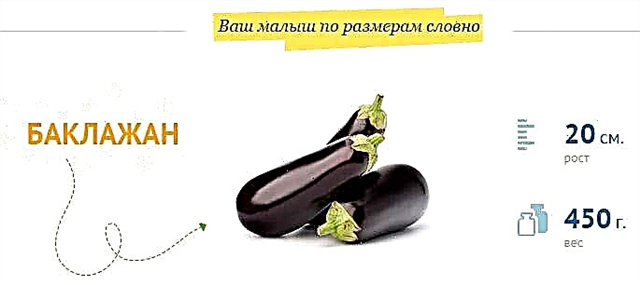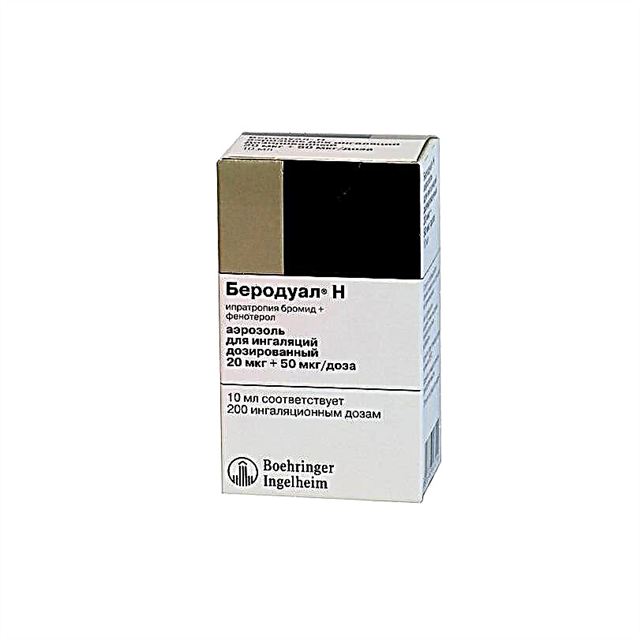Growing up, the baby goes through important stages of development. At first he holds the bottle with his own hands, but soon the time comes to teach the little one to eat on his own without the help of adults. For a mother, this is a difficult and responsible process, so she will need useful advice and lessons on self-eating.

How do you know if your child is ready to eat on his own?
It is impossible to unequivocally answer the question of at what age it is time for the baby to be given a spoon. It depends on the level of development and on the curiosity of the child himself. Some children grab a spoon already at the age of six months, although they still cannot really hold it, others refuse cutlery for up to 2 years. There are also babies who start eating on their own only at 3-4 years old.
However, there is no need to delay training. The sooner the child starts eating without the help of adults, the easier it will be for mom. In addition, these skills are very useful in kindergarten.
Experts advise teaching a child to hold a spoon from the age of 9-10 months. In this case, by the age of 1.5, he will be able to confidently wield cutlery.
Observe the baby, make sure the baby is ripe for the spoon and cup. Only if he is ready, you can begin training. If he is already interested in food, he takes pieces of food and pulls them into his mouth, tries to grab a spoon from his mother's hands - he is ripe to eat on his own. Of course, mom will feed faster, and at first the baby will scatter food throughout the kitchen. However, all parents will still have to go through this stage. Therefore, it is better not to miss the moment.
Instructions for parents who want to teach a child to eat with a spoon
When the baby begins to reach for a spoon, he is ready to try to eat on his own. If you do everything right, your child will learn how to use cutlery within a few months. No matter how precious your time is, no matter how much you want to keep the kitchen clean - do not miss the moment! If the crumb requires a spoon, give him a spoon. And then - follow the instructions.
Useful Tips
- Please be patient. The handles of the one-year-old baby have not yet grown stronger. At first, it will be very difficult for him to hold the spoon, and he will miss it past his mouth. The training will take from 1 to 6 months;
- Train in different places. A great way to teach a child something is to turn the process into an educational game. Offer the little one to feed the plastic bunnies with sand with a spatula when he plays in the playground. So his coordination of movements will improve, which will be useful later in a real kitchen;
- Don't leave your toddler alone with a full plate - he may choke or become capricious due to the fact that he cannot eat. In addition, at first, the child will still be able to bring no more than 3-4 spoons to his mouth. Then he gets tired and you have to help him;
- Choose the right food. The consistency of the food should be such that the child can scoop it up with a spoon and bring it to the mouth. The kid will spill the soup, and take the pieces of food with his hands. Therefore, opt for thick porridge, mashed potatoes or cottage cheese. Do not put a full plate in front of the child at once, but rather put food in it little by little;
- Don't forget the fork. Alternate cutlery to help your baby develop fine motor skills faster. At breakfast, the child tried to pick up porridge with a spoon? For lunch, invite him to eat fish balls with a safe fork;
- Get everyone in the house involved in learning. If you teach the little one to use cutlery, and the grandmother continues to spoon feed him, the process will drag on. The crumb will not understand why he should try to do something himself, if there are adults for this. Explain your teaching principles to all family members and ask them to adhere to them too;
- Follow the schedule. Feed your baby at exactly the same time every day, constantly reinforcing the acquired skills. This will help you develop a habit with your baby. In addition, eating on a schedule will improve digestion;
- Avoid coercion. In the process of learning, the child will sometimes be capricious and refuse to eat on his own. If this happens, feed him yourself, and postpone training until the next meal. When a child is out of sorts, it will still not work to teach him something;
- Dine with the whole family. It will be easier for the kid to master the spoon if he sees how other people are wielding it. He will involuntarily begin to imitate them. For the same reason, in kindergartens, kids quickly learn to eat, dress and potty on their own;
- Design gamesto whet the toddler's interest in learning. You can buy him a plate with a funny picture at the bottom and offer him to eat porridge to see a surprise;
- Start learning with your child's favorite food and only on an empty stomach. The kid will not want to make an effort to eat something tasteless, especially in the absence of appetite;
- Praise the child even for minor successes. To please his mother again, he will try his best;
- Keep your kitchen cozy. Buy colored dishes for the child, lay a beautiful tablecloth on the table, decorate the dish. Little things like that boost your mood and improve your appetite.
Algorithm of actions
To make it easier for parents to teach their child to feed themselves, experts have developed detailed instructions:
- Lay an oilcloth on the table, and put a bib on the child.
- Scoop a spoonful of porridge from the children's plate and eat, smacking your lips with pleasure and feigning delight.
- Give the spoon to the little one. While he cannot hold it, squeeze his palm with your hand, help to scoop up food and bring it to his mouth. Help until the child can hold the appliance on their own.
- When your baby's hands are strong, teach him how to properly hold the spoon - not in a fist, but with your fingers.
- When giving your child a spoon, take another one yourself. While the child is learning to eat himself, help him with another spoon. That is, one spoon for him, one for you.


At first, the baby will just play with a spoon - stir the porridge in a plate, spread it over the face and table. Give him time to get used to the cutlery. If you are tired of your child constantly turning the dishes over, place a plate with a suction cup on the table.
In the same way, you can teach the little one to use a fork and a sippy cup (learning to drink from a mug). Start with small portions, make sure your child is interested, and never show your resentment about stained clothing and furniture.
Cutlery to help the baby

For the child, you need to pick up special dishes and cutlery. The main requirements are safety and bright design, which will stimulate the toddler's interest in learning. To set the table, parents will need:
- Plate made of food grade heat-resistant plastic. It should be bright, preferably featuring characters from your child's favorite cartoons. To see them, the little one will quickly eat all the porridge. It is good if the plate has a suction cup for attaching to the table top and an inclined bottom - it is convenient to scoop food from it;
- Non-spill cup made of non-toxic materials. It is recommended to choose a model with two handles - it is more convenient to hold such a toddler. Make sure that the cup has a silicone or soft plastic spout without burrs, otherwise your baby may scratch his gums. An additional advantage will be the presence of a rubber support, which gives stability to the dishes;
- Anatomically shaped spoon made of safe plastic. To prevent it from falling out of a child's palm, it should have a rounded non-slip handle;
- Curved fork made of non-toxic plastic. Choose a product with rounded teeth so that the child does not get hurt;
- Comfortable highchair. The one that comes with the table will not work. A child should sit at the same table with adults to watch them eat and imitate them;
- Waterproof bib. Many babies resist feeding and rip off their bibs. Therefore, it is better to pick up a colored bib with cartoon characters. It is good if it is made of soft and flexible plastic, and the bottom edge of the product is slightly bent upwards - so all the food will remain in the bib and will not stain clothes.
What if the child refuses to eat himself?
Children are different. Many people reach for the spoon, perceiving it as another toy. There are those who flatly refuse to take cutlery in their hands. In any case, you cannot force the baby to eat himself. Parental pressure will lead to the fact that the baby will develop a negative attitude towards food intake.

[sc name = ”rsa”]
If the child is already one year old, and he still refuses to take a spoon, try to go for a trick:
- Feed the baby yourself, let the baby relax, and try again after a couple of days.
- Ask your child's siblings to show him how they are adept at using spoons.
- Organize a children's party - in the company of friends, the child can practice skills.
While coercion is unacceptable, you shouldn't delay learning to feed yourself for too long. This skill is important for the child's overall development and social adaptation.
Rules of orderliness and safety at the table
A small child will not be able to behave at the table like an aristocrat. However, parents can teach him to eat carefully and follow the rules of hygiene. Just fulfill the following conditions:
- Teach your child by examplehow to hold a spoon and fork, how to eat, drink from a cup, dry yourself with a napkin;
- Wash your hands before eating - yourself and your baby. This should become his habit;
- Observe the diet. Eat only in the kitchen and at specific times. This is important for the child's appetite and strong nervous system;
- Eat in a relaxed environment. Do not let your kid watch cartoons, indulge and be distracted at lunch;
- Repeat the rituals: mother washes the child's hands, puts him on a chair, ties a bib, puts a plate of food on the table. It is important to explain all actions so that the baby understands their meaning (the importance of rituals);
- Decorate the table and dishes - it stimulates the appetite. Lay a fresh tablecloth on the table, put a napkin holder, lay out dishes beautifully on plates;
- Get together at one table with the whole family. Make lunches and dinners with your loved ones a family tradition. Sit down at the table in a good mood, take your time while eating and chew all the pieces thoroughly. So you can enjoy the taste of the dishes and help your digestion;
- Do not pick up food that has fallen to the floor. Teach your toddler not to lift food off the floor. What has fallen can go to a dog's or a cat's bowl, but not to a person's plate;
- Give your child new utensils and utensils gradually. When a baby is only 1 year old, a plate and sippy cups are enough for him. However, by the age of 2, he already needs his own fork, a teaspoon and a tablespoon, a mug, like in adults;
- Observe the order and rules of etiquette. Teach your baby to be neat at the table and wipe with napkins when he gets dirty. Remark your child if he sways in a chair, plays with food, puts his elbows on the table, or picks up something from someone else's plate. Let the whole family follow the rules of good form - and for your son or daughter they will become natural.
Parents' mistakes, or how not to teach a child to eat with a spoon
Teaching a baby to eat on their own is difficult, and at first, many parents make mistakes. Use the experience of other moms and dads - and you will significantly speed up and facilitate the educational process.

- Don't rush your child when he is eating. Phrases like “chew faster, I need to wash the dishes” should disappear from your vocabulary. It is important to chew food thoroughly so that it is well digested, and this takes time. In addition, the meal itself is a great opportunity for mom to communicate with the baby, to give him her care.
- Do not interrupt training. If you've started teaching your child how to use a spoon, continue to bend your line. Do not give in to laziness, do not look for excuses. Explain to all family members that from now on the baby will eat without their help.
- Don't force your child to pick up a spoon. If he is full, sick, or just naughty, leave the baby alone. The lesson on independence can always be rescheduled.
- Do not scold your toddler for getting dirty with food, even if he has played around. These are temporary difficulties, because soon the baby will learn to eat like adults. Your aggression will scare the child, and he will lose all motivation to learn.
- Do not let the TV turn on while eating. Cartoons and any programs distract the kid, but he needs concentration to learn how to use a spoon.
- Do not put a huge portion on the plate. Better to give the child less porridge, and then add a supplement if he asks.
- Don't fall for childish blackmail. Toddlers try to control their parents with whims. So, a child who is already perfectly wielding a spoon and a fork may declare that he will only eat the cutlet himself, but not the soup. This means that the baby is not hungry, so feel free to remove the plate.
- Don't force your child to eat the entire serving. He eats as much as his body needs to function properly. If your baby pushed the plate aside, it means that he is full, even though a third of the portion remains there.
- Don't use double standards. If on a trip you allow your child sweets for lunch instead of soup, then at home it should be exactly the same. If in your kitchen you close your eyes to the fact that the kid wipes his soiled face on the tablecloth, do not make comments to him at a party.
The main advice for parents whose children have begun to master the spoon is not to panic if the training is delayed. Over time, the baby will definitely learn to eat on his own.
Remember, skill comes with experience. It is best to choose foods that stick to the spoon best. Remember: it's okay to start learning to eat with a fork and spoon and get everything dirty!
Video: how to teach a child to eat himself
- STAGE I. From 6 months you should always give your baby a spoon. The child must definitely touch the food with his hand, do not forbid him to do so.
- Stage II. From 7-8 months, the baby will try to dip the spoon into the plate and pull into the mouth. Dip a spoon in food and, at first, help him try with his hand to bring the spoon into his mouth.
- Stage III. Start eating yourself with your child so that he copies your behavior. Let the baby watch you, watch you chew, and put the spoon in your mouth. Show your empty plate and then start feeding your baby. Very quickly, the child begins, watching his mother eat himself.



